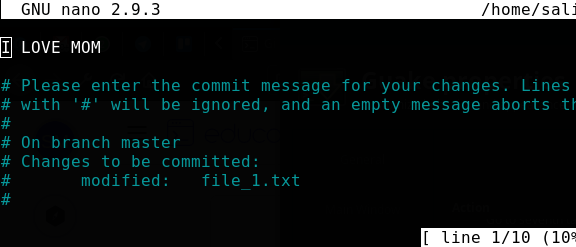Intro to Git hooks

Where there is repetition, there shall be automation —King Sisyphus of Ephyra
These words maybe were not said by Sisyphus, but they are not without wisdom; follow them when possible. While programming, one of the most repetitive actions is typing the same set of characters every time you write a git commit, whether they be issue numbers, branch names, signatures, or something else. Those repetitive tasks might be due to a lot of reasons like company standardization or just plain open source commit guidelines.
Disclaimer: please do not try git hooks on important repositories unless you fully understand what the commands you are invoking do. Try new things on a new empty repository that you can delete if things don’t work out the way they were supposed to
What are hooks? Git hooks?
In programming, hooks are —generally speaking— bits of custom code that the base code allows to intervene at certain places.
In git, we’re allowed to do that; we write a script, configure it, and it gets executed before or after git events/actions such as a commit, a merge, or a rebase.
Our use case
In my job, I find myself writing basically the same word in the start of each commit message. So I thought of finding a way to automatically append that same word to every git commit message. Keep in mind that there are way more use cases, for example you can use a git hook to:
- Auto lint and auto format your code before each commit
- Auto deploy to a server
- Run a new relase build after each merge to your main/master branch
Where to put our script?
First, you need to be able to see hidden files, then you simply go to the /.git/hooks directory in your local repository. That’s where hooks are stored for each repository. You can find a bunch of sample scripts in this directory. Either edit the prepare-commit-msg.sample and save it as prepare-commit-msg (with no extension), or just create a new file with prepare-commit-msg as a name
What to put in our script?
You can virtually write your script in any script language like bash, php, JS, python, ruby, and many others. For our purposes, we will write our script using bash and a unix utility called sed.
Before diving in the code, you should know that a prepare-commit-msg hook gives you access 3 parameters, in order:
- The file that containts commit message itself (We will only use this one)
- The source of the commit message
- The SHA-1 of the commit if we’re editing it
These parameters are accessible through bash positional parameters that follow the aforementioned order, so the commit message file is in the variable $1.
Our script looks like this:
#!/bin/sh
COMMIT_MSG_FILE=$1
MY_MSG="I LOVE MOM"
sed -i.old "1s/^/ $MY_MSG \n /" "$COMMIT_MSG_FILE"
What it does is pretty straightforward.
- We put the commit message in a variable with a better name i.e. COMMIT_MSG_FILE
- We put the word we want to be appended to each commit message in another variable for easy access and editing
- We execute a
sedcommand that adds the content of our$MY_MSGvariable to the top of the commit message file
The sed command
sed is a powerful utility that parses through and edits text. It is out of the scope of this tutorial, so we will just understand the used command.
Besides the options, the sed utility takes two parameters:
- The input file (
$COMMIT_MSG_FILEin our case) - The script, where we tell it how to manipulate text from the input (in our case it is this:
1s/^/ $MY_MSG \n /)
In our command we specify the -i.old option which tells sed to edit the file in place i.e. overwrite it and create a backup file with the same name plus the .old extension. You can use any extension you want, .back and .bak are widely used.
Now we decipher the script.
sed substitution scripts are usually
divided by forward slashes in 3 parts:
- The type of operation we are doing (substitution, deletion, …) and which lines/part of the text we are affecting
- A regular expression to search for the part that is getting substituted
- A replacement string
In our case:
- The
1in the beginning means “only the first line” - The
smeans this is a substitute operation - The
^caret means the start of the buffer, so this isn’t really a substitution but an addition $MY_MSG \nis the replacement string, so the contents of $MY_MSG plus a carriage return
Test the script
After saving the script and making it executable (chmod +x prepare-commit-msg in *nix systems), we just need to commit something.
Edit a file, stage it, and upon executing git commit a text editor pops open with the commit message file loaded, and sure enough the first line proudly says “I LOVE MOM”

If you specify the message through the -m option or through your text editor/IDE, the message will be appended by “I LOVE MOM” automatically. Try it and use git log to see your beautiful commits.
What’s next?
This is a rather simple use case, you can try make the message dynamic or maybe try another hook. I can’t recommend you enough to read more about git hooks and utilities like sed. I am sure you will find at least a way to automate some tasks and become more productive.